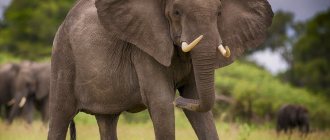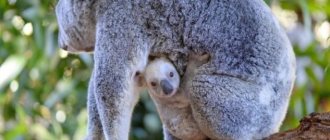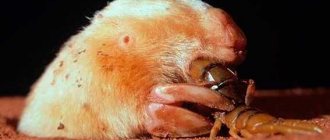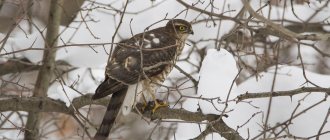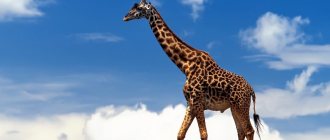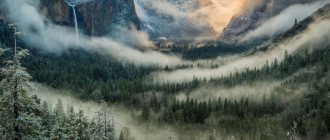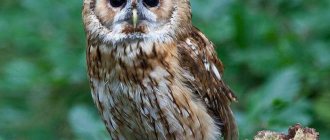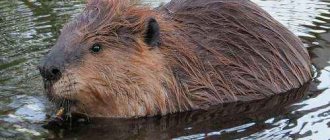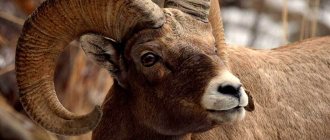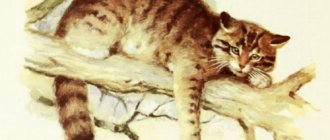Herbivores or herbivores are animals that eat plant-based foods, including grass, fruits, leaves, roots, bulbs, vegetables, etc. The teeth of herbivores are adapted for grinding plant tissue. Although there are a few herbivores that occasionally eat meat, many do not have the ability to chew or digest animal products. Some herbivores prefer fruits and leaves in their diet, so they are often called frugivores and folivores, respectively.
The diets of herbivores vary depending on climate, geographic location, and time of year. In the animal world, herbivory has some advantages. Unlike carnivores, herbivores do not have to hunt for their food in order to consume it. However, some plants protect themselves from animals with thorns or poison.
What are the most common traits of herbivores?
Most herbivores live in groups or herds, meaning they are social. Such animals act as primary consumers in the food chain, which means that they are prey to carnivores. This is why their eyes are usually located on the sides of their heads. This allows you to see a potential threat approaching without turning your head. They also have a common tendency to get very scared and run fast.
Although there are many herbivores in the world, it may surprise you to know that some of them are huge, have a bad reputation and look like carnivores. In this article we will look at some examples of herbivores, mainly mammals, and their diet.
Small herbivores
These include rodents, lagomorphs and other small representatives of the animal world.
Gophers
The basis of their diet is plant food, but few of them supplement their protein reserves with insects and dead animals. Along with food, they receive the right amount of water.
Deserts are home to gophers, kangaroo jumpers, and various types of hares. They are usually nocturnal, with the exception of antelope ground squirrels: they are not afraid of the sizzling heat.
Interesting!
A gopher can lose up to 13 percent of its water per day. To compensate for losses, he eats young green leaves and drinks morning dew.
The body of kangaroo jumpers receives water, which is formed as a result of the digestion of plant foods. These animals consume moisture very sparingly.
The air passing through the nasal passages cools; The water vapor contained in it settles in the form of tiny droplets of water and is absorbed by the mucous membrane.
Lagomorphs have 2 pairs of well-developed upper incisors. They feed on grass, green elements of plants, branches, and sometimes bark.
Because animals have a high protein requirement, they sometimes seem to be eating constantly.
Steppe rabbits sit out hot weather in abandoned burrows. They feed on grains, grass and even cacti.
Beaver
Beavers are large semi-aquatic rodents from the genus Castor that are primarily nocturnal. They are distributed throughout Eurasia and North America. Beavers are one of the largest rodents in the world; occupy second place after the capybara. They are famous for the construction of large dams. They are herbivores that primarily consume twigs, foliage and bark from birch, maple, alder, cherry, willow, aspen and coniferous trees.
Capybara
The capybara (Hydrochoerus hydrochaeris) is the world's largest rodent. It is a member of the genus Hydrochoerus, like the capybara. The guinea pig is closely related to the capybara, and its distant relatives include chinchillas, nutrias and agoutis. The capybara is a social species that lives in groups of 10 or 20 individuals around dense forests and savannas. They are native to South America and primarily feed on grass, fruits, aquatic plants and tree bark.
Ecology DIRECTORY
HERBIVORE - an organism, such as a rabbit or deer, that feeds primarily on green plants or their fruits and seeds.[...]
Herbivorous organisms often form aggregations that are not the result of an aggregation response. — Accumulations of herbivores create partial shelters for plants. [...]
The effect of herbivory on a plant depends on at what point in the plant's life cycle and which parts of the plant are attacked. Leaf biting, sap sucking, mining, meristem eating, flower or fruit damage, and root gnawing all have different effects on the plant. Therefore, the consequences of defoliation for a developing seedling are unlikely to be the same as for a plant that has produced its own seeds. In addition, since the plant remains alive for some time after exposure to a predator, the effect of this exposure largely depends on the reaction of the plant itself. Mineral salts or nutrients may be carried away from one part of the plant to another; may (change the general level of metabolism, the relative rate of root growth, shoot growth and the rate of reproduction; special protective substances or tissues may be formed. In general, the result of the influence of a herbivorous organism may be more or less significant than it seems. It is rarely what it is appears at first glance.[...]
The influence of herbivorous organisms can be expressed to varying degrees - from complete cessation of growth to a slight effect on its rate. When leaves appear on the plant at the same time, the effect of defoliation depends largely on the timing of exposure: at the beginning of the growing season, the removal of 75% of leaves from a mature oak tree leads to a 50% loss in wood formation, but in a later period a similar effect does not noticeably affect growth ( Franklin 1970; Rafes 1970). On the contrary, in plants with an extended period of leaf appearance, the loss of young leaves can be compensated by the appearance of new ones. [...]
PHYTOPHAGE is a herbivorous organism.[...]
As a rule, herbivorous organisms most often (increase the sensitivity of plants “to mortality factors, thereby directly killing the plant. However, the loss of leaves several times in a row can greatly affect the plant. Thus, a single destruction of oak leaves by Lymantria dispar caterpillars leads to only 5 % mortality (not different from natural mortality among intact trees in a dense forest); but three times severe defoliation causes an increase in mortality to 80% (Stephens, 1971). [...]
Consumers (from Latin - I consume) are organisms that consume ready-made organic substances created by photosynthetic or chemosynthetic species (producers). These include all animals, including humans, some microorganisms, parasitic and insectivorous plants. Consumers are distinguished: primary (first order), feeding on plant food (herbivores), and secondary (second, third and subsequent orders), feeding on animal food, as well as herbivorous organisms, i.e. primary consumers.[...]
One of the reactions of plants to the influence of herbivorous organisms is the initiation or enhancement of the formation of protective structures and chemical compounds. This requires additional costs from the plant, but it benefits from a reduction in the subsequent pressure of herbivorous organisms. For example, pine, attacked by horntails and sawflies, changed the metabolism of phenol and new chemical protective substances appeared (Thiegles, 1968); artificially damaged Potato and tomato plants produced increased amounts of protease inhibitors (Green and Ryan, 1972), and the thorns on blackberries that were eaten by lambing grew longer and sharper than those on neighboring undamaged plants (Abrahamson, 1975).In addition, plant responses usually lead to a decrease in the effect of subsequent attacks on him.[...]
Individual plants can compensate for the influence of herbivores in various ways, and. First, removing leaves from a plant can reduce the shading of other leaves and, as a result, lead to an increase in the rate of photosynthesis in them. Thus, it was noted that the weevil Phyllobius argentatus feeds mainly on the lower, shaded leaves of beech, located closer to the trunk, which is why the productivity of the entire plant changes little (Nielsen, Ejlerson, 1977).[...]
So, it is clear that individual plants compensate for the influence of herbivorous organisms in different ways. However, full compensation is rare. Typically, plants are still damaged by herbivorous organisms, even though compensatory reactions are aimed at neutralizing the harmful effects. In addition, as we will see later, there are many cases in which the effects of herbivory are more pronounced than they might seem at first glance. [...]
Changes in plant fertility as a result of damage by herbivorous organisms to some extent reflect the effect of these organisms on plant growth: smaller plants produce fewer seeds. But the influence of herbivorous organisms and fertility is not limited to this. One of the most common plant responses to damage by herbivores is delayed flowering. Within a season, this delay can be particularly damaging if it reduces the frequency of contact with pollinators late in the growing season or increases the likelihood of exposure to frost. For example, regrown shoots of groundsel (Senecio jacobaea), which bear flowers in November, are very sensitive to frost (Crawley, 1983). In addition, in long-lived species with a single reproduction, flowering after being eaten by herbivores is delayed for a year or more; and this usually leads to an increase in the life expectancy of such plants, since after a single intensive reproduction they almost certainly die (Chapter 4). Annual bluegrass (Roa appia) sown on a lawn can be kept green and almost forever if this grass is mowed every week (Crawley, 1983), whereas in natural conditions where it is possible to bloom, it lives only one year , which is reflected in its name.[...]
Another way in which a plant “compensates for the effects of a herbivore is to increase the rate of photosynthesis per unit area of remaining leaves (“photosynthetic rate per unit leaf area” or PLE). In order to understand how this mechanism works, we must remember that plants consist of producing parts (pure suppliers of assimilates, usually leaves) and storage parts (pure consumers of assimilates, such as tubers, forming leaf buds, roots, etc.), and the amount formed by the producing parts of the plant substances usually correspond quite accurately to the needs of storage parts. When a plant loses part of its leaves, the FEP of the remaining leaves often increases, which allows maintaining an approximate equality between production and requirements for reserve substances. For example, in Agropyron smithii, with (which was removed during the experiment leaves, there was a 10% increase in the intensity of photosynthesis per unit of leaf area, which continued over the next 10 days, while in control plants this figure decreased by 10% (Painter and Detling, 1981). A compensatory increase in FEP can also be observed when new “storage parts” are formed, as is the case when sucking insects, such as aphids, consume huge amounts of carbohydrates. However, if storage tissues are destroyed by herbivorous organisms, then FEP may decrease (although in such cases it is more common to maintain the intensity of assimilate storage due to the formation of new tissues).[...]
There are first-order consumers who feed on producer plants (herbivores), second-order consumers who feed on herbivorous organisms (carnivores), and third-order consumers whose food items are weaker predators. Another series of consumers goes along the parasitic line - a parasite of a herbivore or predator, a superparasite of this parasite, a superparasite of the second order.[...]
BIOLOGICAL PRODUCTS are the result of the vital activity of an ecological system, the organic matter of which is produced by its constituent organisms per unit of time (day, year, etc.). A distinction is made between primary (plant) and secondary (the result of the activity of non-chlorophyll organisms) products. Secondary food production can be divided according to trophic levels into the production of herbivorous organisms, first-order predators, etc. The value of B. depends on the amount of resources, and primarily on the resource that is in short supply (moisture in the steppe zone, soil fertility in the forest, heat in the tundra).[...]
The types of guild structure in leaf-eating insects are similar to those observed in other groups, however, their emergence is apparently associated not with competition, but with other reasons [124]. The first researchers to study this issue believed that in such herbivorous organisms the population size should be limited by predators, since a huge number of plants are available to them and the number of prey increases when predators are removed [10, 170]. Such predation could lead to high herbivore species diversity, freeing up resources for additional species. However, food is not necessarily super-abundant, especially for herbivorous insects, due to the content of secondary metabolites in plants and their low nutritional value [184]. Thus, low population densities will not always lead to high species diversity. And yet, predators and parasitoids are considered one of the important factors that help explain the species diversity of herbivorous insects [124, 184-186].[...]
The main source of biogenic cations in the soil is the destruction of parent rocks, but their supply by precipitation cannot be neglected. Cations are absorbed by the roots, but accumulate in the greatest quantities in the foliage and thus enter the food of herbivorous organisms. Mineralization of excrement and corpse E returns biogenic cations to the soil and thus their circulation is carried out. Humus in the soil is a reservoir of nutrients. [...]
It is obvious that the links (and the organisms included in them) forming the food, or trophic, chain are unequal, primarily from the point of view of the space they occupy. Therefore, in ecology it is customary to talk not just about chain links, but about certain trophic levels. At the first level, obviously, there are green plants - producers; the next trophic level consists of herbivorous organisms; they are followed by representatives of a higher level - carnivores, which, in turn, serve as a source of food for the next level - second-order carnivores. Then the chain discussed above can be written as follows: “oak - gypsy moth - parasite - secondary parasite.” [...]
It has been established that in very harsh environmental conditions, population numbers fall below the levels at which they compete. Based on this conclusion and taking into account that under the most favorable abiotic factors, population density decreases under the influence of predators, J. Connell proposed the scheme shown in Fig. 5.13. According to it, in the mild conditions of the tropics the main thing is to resist herbivorous organisms, and with increasing latitude the main thing is to counter competition.[...]
Among consumers, monophages (animals that feed on one type of prey), oligophages (feeding on a small number of prey species) and polyphags (feeding on many species of prey) can be distinguished. For convenience, animals are often divided into specialists (in a broad sense these are monophages and oligophages) and generalists (polyphags). Examples of species that are monophagous, oligophagous, and polyphagous can be found among herbivores, parasitoids, and true carnivores. But among consumers of different types, the distribution of animals with different breadths of the nutritional spectrum varies. Of course, even among true predators there are species that specialize in strictly specific food, for example, the slug-eating kite (Hospitaliatumus sostalii) feeds almost exclusively on slugs of the genus Rotacea. But most true predators have a relatively wide food spectrum. At the same time, parasitoids, as a rule, are specialized and are often monophagous, while herbivorous organisms are quite fully represented in all categories. However, if herbivorous organisms with grazing and “carnivorous” types of nutrition usually have wide food spectrums, then “parasitic” herbivorous organisms are very often highly specialized. For example, Jensen (1980) studied in Costa Rica 110 species of beetles, the larvae of which feed on the seeds of dicotyledonous plants, and found that 83 of them infect only one plant species, 14 - only two, 9 - three, 2 - four, and each one species attacks six and eight plants. And this despite the fact that 975 plant species grew in the area.[...]
ECOSYSTEM STABILITY is the ability of an ecosystem and its individual parts to withstand fluctuations in external factors and maintain its structure and functional characteristics. On the contrary, the degree of inability of an ecosystem to withstand harmful external influences means its vulnerability. For example, in a given ecosystem, precipitation decreases by 50% compared to average annual values, but plant production decreases by only 25%, and the population of herbivorous organisms decreases by only 10%. The relative attenuation of fluctuations in the environment as they pass through food chains serves as a measure of the internal stability of an ecosystem - its ability to withstand change (Ricklefs, 1979). At the same time, U.e. may be due to the presence of moisture reserves in the soil, and in the case of a sufficiently long drought - to the partial replacement of drought-sensitive herbaceous plants with drought-resistant species. This ability of ecosystems is important when studying the consequences of exposure to anthropogenic factors; in particular, the most vulnerable are ecosystems dominated by mosses and lichens, which are the most sensitive to air pollution. [...]
The much-discussed idea that certain predator-prey pairs of species not only evolve, but also co-evolve, is very attractive. In other words, there is a kind of evolutionary “arms race”, as a result of which each improvement in the hunting abilities of the predator is followed by an improvement in the prey’s ability to avoid the predator or be resistant to its influence; this in turn causes further improvement in the predator's abilities, etc. If such coevolution takes place, then it should serve as an additional factor helping to limit the composition of the diet. However, at present, there is practically no strict evidence of the coevolution of a predator-prey pair or a plant-herbivorous organism (Priuta and Bykt, 1983). [...]
Camel
Members of the genus Camelus, camels are four-legged, artiodactyl mammals bearing distinctive fatty deposits on their backs known as humps. These animals are found in Asia and Africa. Camels were domesticated by humans because they are adapted to live in waterless and hot places, with significant differences in ambient temperature between day and night. Camels are herbivores; their main diet consists of saltwort, wormwood, camel thorn and saxaul.
Literature
- Shilov I. A. Ecology: A textbook for biologists. and honey specialist. universities / Shilov I. A. - M.: Higher School, 1998. - 512 p.
- Biological encyclopedic dictionary / chapter. ed. M. S. Gilyarov. - M.: Soviet Encyclopedia, 1986. - P. 674.
This is one of the largest and most dangerous bird species in the world. Their usual habitat is the tropical forests of New Guinea and Australia. To communicate with other birds of its species, the cassowary uses a crest on its head, with the help of which it receives very low frequencies, thanks to which communication between birds can be maintained over a long distance. They are quite dangerous herbivores and attack not only horses, cows and dogs, but also people. The most dangerous are the males who protect the chicks.
There are 5 species of rhinoceroses in the world, living in Asia and Africa. These animals are very hot-tempered, which makes them dangerous. The main and dangerous weapon of a rhinoceros is its horns, which are made of protein, and not, as many mistakenly believe, made of bone tissue. The largest known horn was 1.5 meters long. Due to its aggressive nature and heavy weight, a rhinoceros can be gored or trampled to death. The peculiarity of the Indian rhinoceros is that, in addition to its horn, it also uses sharp teeth as a weapon.
Wild boars are only partially vegetarian, as their diet also includes small animals (frogs, lizards). The weight of males can reach 300 kilograms. They can easily cut open a predator thanks to their large, sharp fangs. If the male is already old enough, he is able to fight off a pack of wolves alone. The canines of females are smaller and pose the greatest danger, like many other animals, when they protect their young.
Elephant
Elephants are members of the elephant family (Elephantidae) and are native to Asia and sub-Saharan Africa. They are the only surviving members of the order Proboscidea, as other close relatives such as mammoths, mastodons and gomphotheres became extinct. There are three known species of elephants: the African forest elephant, the African savanna elephant and the Indian elephant. They are all herbivores that consume small plants, bushes, fruits, twigs, tree bark and roots.
Classification of birds by type of nesting
This classification distinguishes 5 groups of birds, depending on the nest in which they live.
Crown-nesting birds
Crown-nesting birds - build nests in the crowns of trees, these include orioles and blackbirds. Most often, a cup-shaped nest is made at a height of three meters. It can be made of twigs, moss and leaves. To ensure the strength of the structure, all materials are held together with saliva mixed with clay and wood dust.
Ground nesting birds
Ground-nesting birds are birds that build their homes directly on the ground, for example: waders, larks. Goat beetles lay their eggs in a simple manner, right on the ground. Waders dig small holes, and cranes also line the prepared hole. Rattles make a nest of moss and leaves, shaped like a ball.
Bush birds
Bush birds - live either in bushes or near them, the most famous among people is the robin, lives in gardens and parks. It builds a nest from available materials: leaves and grass, turning it into a small basket. Another striking example is the warbler, which builds nests even close to people, in raspberry or currant bushes. A distinctive feature of her home is the decoration of her own white fluff along the side of the nest.
Birds burrowers
Burrowing birds live in burrows in sandy hills, not on the banks of water bodies, and often use the same nest for several years. Examples of such birds include: shore swallows and kingfishers.
Hollow nesting birds
Hollow nesting birds live in hollows specially made and formed by nature in tree trunks, these include woodpeckers and tits. Woodpeckers hollow out nests of considerable size, more than 40 centimeters deep at a height of up to 15 meters. It takes them more than two weeks to arrange their home. Some birds use natural hollows or those abandoned by other birds.
Horse
The horse (Equus ferus caballus) is an odd-toed ungulate mammal belonging to the equidae family. Human domestication of horses began around 4000 BC, and became widespread by 3000 BC. Horses are herbivores and typically eat grass. However, domesticated horses are often fed oats, bran, barley and hay.
What does a koala eat?
Predators include dingoes and great owls
. They also run the risk of being hit by cars and attacked by dogs. Chlamydia is widespread in some koala populations and can cause blindness, infertility and sometimes death.
Interesting materials:
What are the 3 main network topologies? What are four important aspects of network management tools? What are the main reasons for using social networks? What are the basics of networking? What are the benefits of a peer-to-peer network? What are the benefits of dividing the entire network into zones? What are the benefits of a NAT network adapter? What are the risks of social networks? Is a network security key the same as a password? Is the network security key the same as my password?
Giraffe
Giraffes are artiodactyl mammals from the genus (Giraffa). They are the tallest living land animals on the planet. The genus Giraffa has 6 species. Giraffes eat exclusively plant foods. Their long necks allow them to reach the branches, buds and leaves of acacia trees. Giraffes can eat large amounts of greens and go for weeks without drinking water because they get most of their moisture from the vegetation they consume.
Manatee
Manatees are large aquatic mammals that have egg-shaped heads, flippers, and a flat tail. They are also sometimes called "sea cows". Manatees are members of the genus Trichechus in the family Trichechidae. They live in shallow waters, including sea bays, canals and slow-moving rivers. Manatees tend to migrate. Like land cows, they follow a herbivorous diet that primarily consists of floating or submerged vegetation.
Big panda
The giant panda (Ailuropoda melanoleuca) is a mammal from the bear family (Ursidae) native to China. A panda is easily recognized by its large, distinctive black spots around its eyes, on its ears, and across its round body. Although this animal belongs to the order Carnivora, its diet consists of more than 99% bamboo. Giant pandas in the wild may sometimes eat other grasses, wild tubers, or even the meat of birds, rodents, or carrion.
Hippopotamus
The hippopotamus or common hippopotamus (Hippopotamus amphibius) is an African artiodactyl mammal. Often considered the second largest land animal. The hippopotamus is comparable in size and weight to the white rhinoceros (Ceratotherium simum) and the Indian rhinoceros (Rhinoceros unicornis). Like other herbivores, hippos eat a variety of plants, but the majority of their diet consists of grass.
